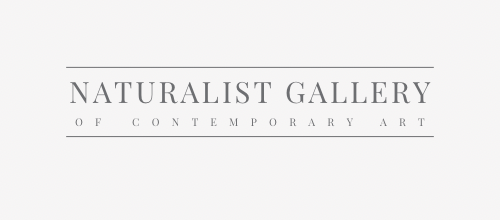The art world is undergoing a transformative phase marked by the rise of immersive art experiences. This evolution is characterized by a shift from traditional, passive art viewing to engaging, multisensory encounters that invite audience participation and interaction.
Explore our curated selection of contemporary artists from around the globe.
Naturalist Gallery offers artist representation internationally. Apply your art.
Emerging Trends in Immersive Art
Recent years have seen a surge in immersive art exhibits globally, with venues vying to host the next big exhibit. Notable examples include Yayoi Kusama's Infinity Mirror Rooms and the Van Gogh: The Immersive Experience. These installations utilize state-of-the-art technology like 360° digital projections and virtual reality to create enveloping, dynamic environments where classical works by Van Gogh, Monet, and Dalí are brought to life in new and unexpected ways. Furthermore, new platforms are emerging that focus specifically on showcasing immersive art, highlighting its growing significance within the contemporary art scene.
Art Spaces Redefining the Viewing Experience
Innovative art spaces such as Artechouse, TeamLab, Meow Wolf, and Factory Obscura are at the forefront of this immersive revolution. They diverge from traditional gallery models to create spaces where art is not just seen but experienced. These venues prioritize community building and engagement, offering interactive art experiences that foster a more inclusive and accessible approach to art appreciation. Unlike conventional museums and galleries, immersive art spaces promote a more dynamic and collaborative form of interaction between the artwork and the viewer.
Driving Factors Behind the Popularity of Immersive Art
Several factors contribute to the rising popularity of immersive art experiences:
-
Technological Advancements: The integration of digital technology in art has expanded the possibilities for creative expression, allowing artists to create more engaging and interactive works.
-
Pandemic-induced Digital Shift: COVID-19 has accelerated the adoption of digital formats in the art world, pushing museums and galleries to explore new ways to connect with audiences remotely.
-
Public Desire for Connection: The isolation brought on by the pandemic has intensified the public's longing for shared experiences and human interaction, making immersive art experiences particularly appealing.
-
Market Needs: Museums and galleries are seeking innovative ways to attract wider audiences and recover from financial losses incurred during the pandemic, making immersive experiences a strategic choice to boost visitor numbers and engagement.
Looking Forward: The Future of Immersive Art
As immersive art experiences continue to gain momentum, they are redefining our understanding and consumption of art. They challenge traditional notions of art viewing, offering new platforms for storytelling and artistic expression that resonate with contemporary audiences. Moving forward, the success of immersive art will likely hinge on its ability to maintain artistic integrity while becoming more accessible and inclusive. The focus could shift towards supporting emerging artists and leveraging technology to create immersive experiences that are not only spectacular but also meaningful and culturally significant.
In conclusion, the rise of immersive art experiences represents a significant shift in the art landscape. It opens up new avenues for engagement, democratizes art appreciation, and heralds a new chapter in the fusion of art, technology, and community.
Learn more About Naturalist Gallery of Contemporary Art.
You may also find the following articles helpful:
The 14 Essential Artists of Impressionism
Expressionism: 20 Iconic Paintings & Their Artists
Renaissance Art: Origins, Influences, and Key Figures
Classical Art Movement: Exploring the History, Artists, and Artworks
Figurative Art: Understanding, Collecting, and Appreciating the Style
Daily Routines of Famous Artists: Learn from the Masters
Top 12 Controversial Artworks That Changed Art History





